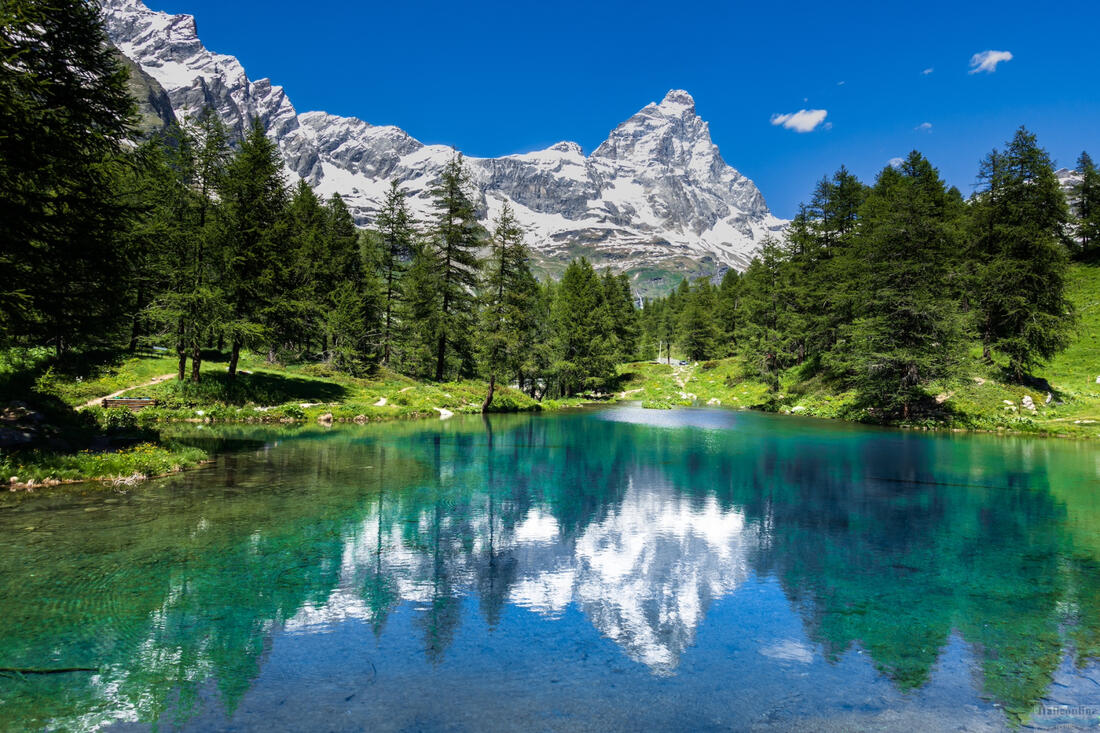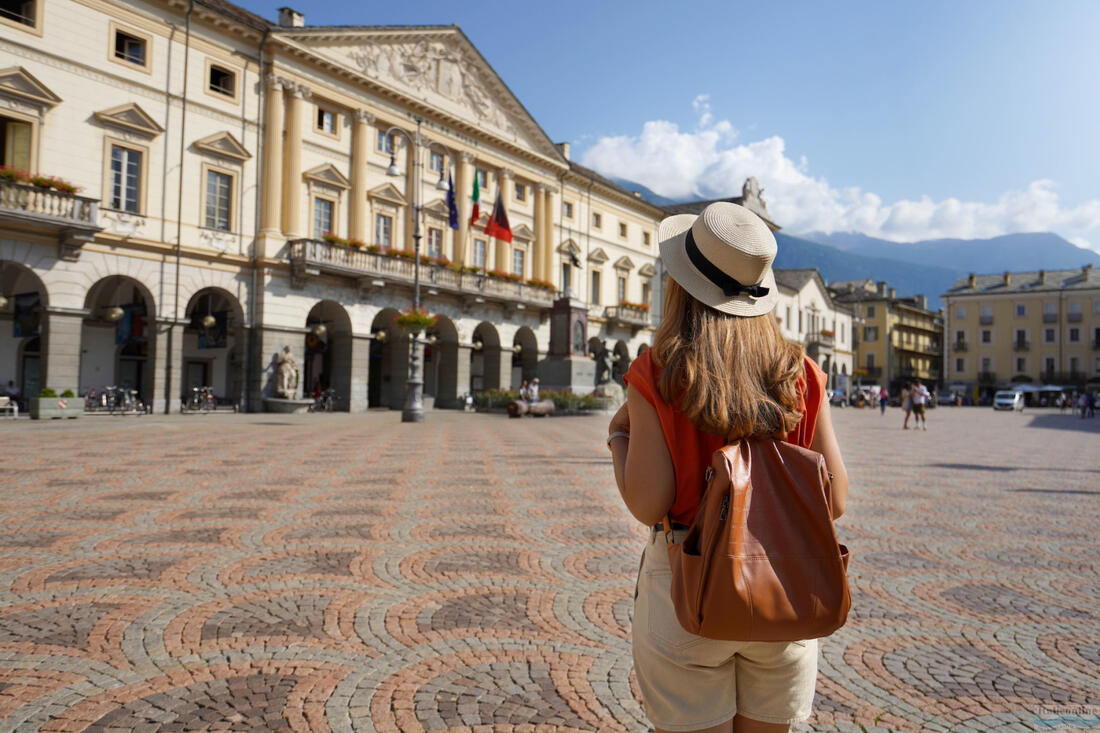The natural wonders of Valle d'Aosta
Valle d'Aosta is literally a paradise for lovers of the mountains and nature. Some of Europe's highest peaks are located here, including Mont Blanc (4,810m), the Matterhorn and the Gran Paradiso. These majestic mountain ranges form an unforgettable backdrop and offer endless opportunities for sporting activities in every season. In winter, the region becomes a skier's paradise, while in summer it attracts hikers and climbers who will set offon adventurous expeditions along mountain trails or discover the tranquil alpine lakes.
One of the natural gems of the region is the Gran Paradiso National Park, Italy's oldest national park, which offers a wealth of flora and fauna. Here you can encounter chamois, ibex and eagles. Tourists who visit here can explore unspoilt nature, dense forests and glacial valleys.

History and culture
The Valle d'Aosta is also a region that abounds in history. In ancient times, the area was a strategic point between Italy and the rest of Europe, attracting both the Romans and later the Franks and other conquerors. Evidence of the ancient past is the many Roman monuments they left here. Among the most famous is the Roman amphitheatre at Aosta, which is one of the best preserved Roman buildings in northern Italy.
Another fascinating landmark of the region are its medieval castles. Castello di Fénis, Castello di Issogne and Castello di Sarre are impressive fortresses that not only protect thevalleys but also tell stories of noble families, knights and kings. Today, these castles are open to the public and offer tourists a unique glimpse into the past.

Local cuisine? A tribute to mountain tradition
Valle d'Aosta is also a place where you can taste authentic mountain cuisine. Local dishes are rich, nutritious and often include local produce such as cheese, meat and wine. Among the most famous specialities is the fonduta valdostana, a creamy mixture of Fontina cheese, the heart of the local cuisine, and white wine. Made from local cow's milk, Fontina cheese is a symbol of the region's traditional craftsmanship and flavours.
Other delicacies include dishes such as carbonada, a delicious beef dish with wine, and polenta concia, a cheesy polenta served with melted butter and cheese. These dishes are perfectly matched with the local wines, especially those of the Nebbiolo variety, which is grown in the high mountain vineyards.
And don't forget to try the tegole valdostane. These soft and crunchy biscuits are made with simple ingredients such as flour, sugar, butter, eggs, almonds and hazelnuts. The name 'tegole' means 'roof tiles' in Italian and refers to their characteristic shape, which is reminiscent of the domed tiles used on the roofs of Alpine houses.

Culture and tradition
The people of Valle d'Aosta are proud of their bilingualism and cultural heritage. Italian and French are both official languages here and this cultural symbiosis is reflected in the daily life of the inhabitants. Traditions such as winter carnivals, grape harvest festivals and craft markets are deeply rooted and give this region its unique character.
One of the most important cultural events is the Foire de Saint-Ours, a crafts fair held annually in January in the capital Aosta. This fair is a celebration of traditional arts and crafts, where local artisans showcase their products, from wooden sculptures to lace and ceramics.
Aosta, a city at the crossroads
The capital of the region, Aosta is often referred to as the "Rome of the North" thanks to its Roman roots and its many preserved monuments. Aosta is a quiet and pleasant city where ancient history mixes with a modern way of life. The streets are full of quaint cafes where you can enjoy a coffee and admire the beauty of the ancient architecture.

This region is the ideal destination for those looking for authentic experiences, beautiful nature and the chance to immerse themselves in the rich Italian and French culture. Valle d'Aosta is, in short, a place where every moment becomes an adventure and where every corner carries a story worth discovering.







